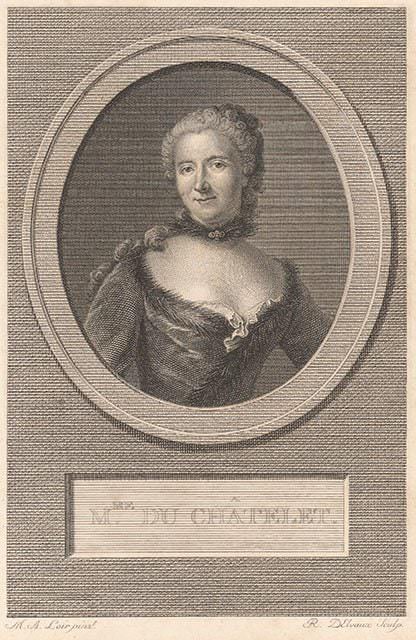Rémi Delvaux
Rémi Delvaux
French 1748–1823
Marianne Loir (after)
French c. 1715–1769
Portrait of Émilie du Châtelet c. late 1700s
etching and engraving
Colin Holden Charitable Trust
Although Delvaux’s print focuses on Émilie’s demure expression and luminous décolletage, the original painted portrait reveals her status an important Enlightenment scientist through an array of scientific implements and manuscripts placed in her midst.
Encouraged to pursue studies in mathematics and physics by her father, Émilie became an eager, albeit unwelcome participant of scientific salons—reportedly masquerading as a man to attend these sessions incognito. By her 1738, however, she became one of the few publicly recognised female intellectuals of the era when her essay on the nature of fire was published by the Paris Academy.



